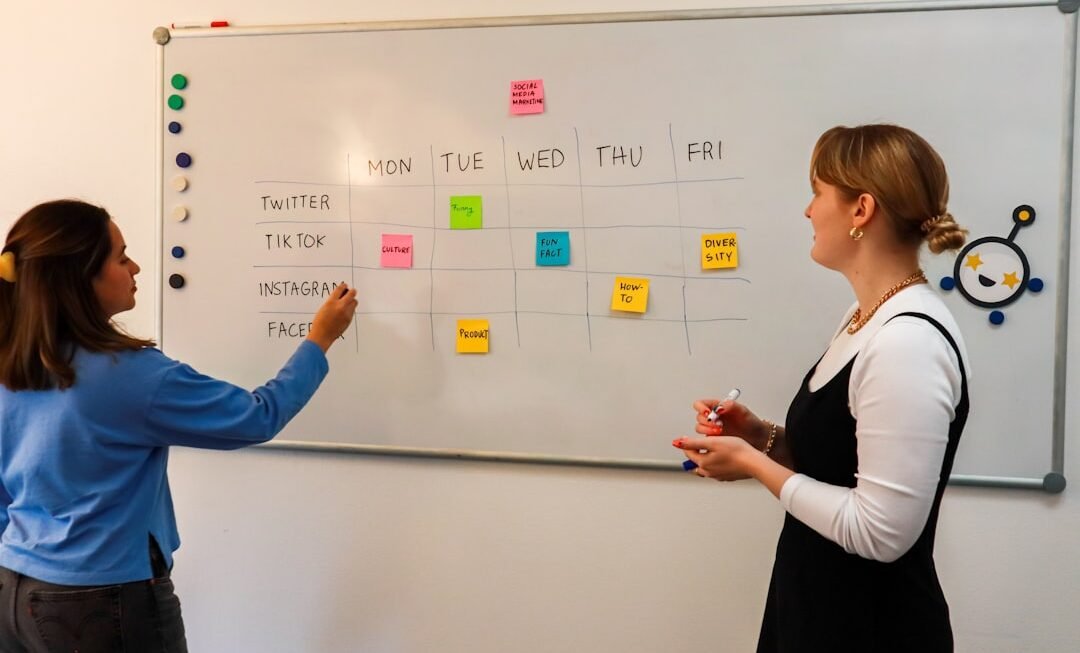Work-Integrated Learning (WIL) represents a transformative approach to education that bridges the gap between theoretical knowledge and practical application. This educational model integrates academic learning with real-world work experiences, allowing students to apply their classroom knowledge in professional settings. WIL encompasses various forms, including internships, co-op programs, apprenticeships, and project-based learning, all designed to enhance students’ employability and readiness for the workforce.
By engaging in WIL, students gain invaluable insights into industry practices, develop essential soft skills, and cultivate professional networks that can significantly influence their career trajectories. The significance of WIL has grown in recent years as employers increasingly seek graduates who possess not only academic qualifications but also practical experience. The traditional education model, which often emphasizes rote learning and theoretical understanding, is being challenged by the need for a more holistic approach that prepares students for the complexities of modern workplaces.
As industries evolve and new technologies emerge, the demand for adaptable, skilled workers has never been higher. WIL serves as a vital mechanism for equipping students with the competencies required to thrive in dynamic environments, making it an essential component of contemporary education.
Key Takeaways
- Work-Integrated Learning (WIL) integrates academic learning with practical work experience.
- AI technologies play a crucial role in enhancing WIL by providing personalized learning experiences and improving skill development.
- AI-enabled WIL offers personalized learning experiences tailored to individual student needs and learning styles.
- AI-enhanced WIL improves workforce readiness by providing real-time feedback and adaptive learning opportunities.
- Ethical considerations and challenges in implementing AI technologies in WIL must be carefully addressed for the future of WIL with AI technologies.
The Role of AI Technologies in Work-Integrated Learning
Enhancing Student Engagement
AI facilitates the matching of students with suitable work placements based on their interests and career aspirations, increasing student engagement and the likelihood of successful outcomes in WIL programs.
Streamlining Administrative Processes
AI technologies can automate administrative tasks associated with WIL, such as tracking student progress and managing partnerships with industry stakeholders. AI-driven platforms can collect and analyze data related to student performance during internships or co-op placements, providing valuable insights into the effectiveness of WIL programs.
Ensuring Relevance in the Labor Market
By leveraging AI, educators and employers can make informed decisions about curriculum design and training initiatives, ensuring that WIL remains relevant and responsive to the evolving demands of the labor market.
Enhancing Skill Development through AI-Enabled Work-Integrated Learning
AI-enabled Work-Integrated Learning offers a unique opportunity to enhance skill development among students by providing tailored learning experiences that align with industry requirements. Through the use of AI algorithms, educational institutions can identify specific skill gaps within their curricula and adjust their offerings accordingly. For example, if data analysis reveals that students are struggling with certain technical skills that are in high demand in the job market, institutions can introduce targeted training modules or workshops to address these deficiencies.
Furthermore, AI technologies can facilitate real-time feedback during work placements, allowing students to refine their skills on the job. For instance, AI-powered tools can analyze a student’s performance in various tasks and provide instant feedback on areas for improvement. This immediate response mechanism not only accelerates the learning process but also fosters a culture of continuous improvement among students.
By integrating AI into WIL, educational institutions can create a more responsive and adaptive learning environment that equips students with the skills necessary to succeed in their chosen fields.
Personalized Learning Experiences with AI in Work-Integrated Learning
One of the most significant advantages of incorporating AI into Work-Integrated Learning is the ability to deliver personalized learning experiences tailored to individual student needs. Traditional educational models often adopt a one-size-fits-all approach, which may not adequately address the diverse learning styles and paces of students. In contrast, AI technologies can analyze vast amounts of data related to student performance, preferences, and engagement levels to create customized learning pathways.
For example, AI-driven platforms can recommend specific projects or tasks based on a student’s strengths and weaknesses, ensuring that they are challenged yet supported throughout their WIL experience. Additionally, these platforms can adapt in real-time to a student’s progress, offering additional resources or alternative learning methods when necessary. This level of personalization not only enhances student satisfaction but also leads to improved learning outcomes as students engage more deeply with content that resonates with their individual goals and aspirations.
Improving Workforce Readiness with AI-Enhanced Work-Integrated Learning
The integration of AI technologies into Work-Integrated Learning significantly contributes to improving workforce readiness among graduates. As industries continue to evolve rapidly due to technological advancements, employers are increasingly looking for candidates who possess not only technical skills but also critical thinking abilities and adaptability. AI-enhanced WIL programs can help cultivate these essential competencies by providing students with hands-on experiences that mirror real-world challenges.
Through simulations powered by AI, students can engage in problem-solving scenarios that require them to think critically and make decisions under pressure. For instance, an AI-driven simulation might present a marketing student with a series of data analytics challenges that they must navigate to develop an effective campaign strategy. Such experiences not only build technical proficiency but also foster soft skills such as teamwork, communication, and resilience—qualities that are highly valued by employers across various sectors.
Ethical Considerations in AI-Enabled Work-Integrated Learning
While the benefits of AI-enabled Work-Integrated Learning are substantial, it is crucial to address the ethical considerations associated with its implementation.
Institutions must establish robust data protection policies that comply with legal regulations while also safeguarding students’ personal information from potential breaches. Another ethical consideration involves the potential for bias in AI algorithms. If not carefully designed and monitored, AI systems may inadvertently perpetuate existing biases present in training data or decision-making processes.
For example, if an AI tool used for matching students with work placements is trained on historical data that reflects biased hiring practices, it may reinforce those biases in its recommendations. To mitigate this risk, institutions must prioritize transparency in their AI systems and actively work towards creating inclusive algorithms that promote equity in access to opportunities within WIL programs.
Overcoming Challenges in Implementing AI Technologies in Work-Integrated Learning
Despite the promising potential of AI technologies in enhancing Work-Integrated Learning, several challenges must be addressed for successful implementation. One significant hurdle is the lack of familiarity among educators and industry partners with AI tools and their applications in educational contexts. Many educators may feel overwhelmed by the rapid pace of technological change and may require training and support to effectively integrate AI into their teaching practices.
Additionally, there may be resistance from stakeholders who are skeptical about the efficacy of AI in education or who fear that it could replace traditional teaching methods. To overcome these challenges, institutions must foster a culture of innovation and collaboration among educators, industry partners, and students. By providing professional development opportunities focused on AI literacy and encouraging open dialogue about its benefits and limitations, institutions can create an environment conducive to embracing technological advancements in WIL.
The Future of Work-Integrated Learning with AI Technologies
Looking ahead, the future of Work-Integrated Learning is poised for significant transformation through the continued integration of AI technologies. As advancements in machine learning and data analytics evolve, we can expect even more sophisticated tools that enhance the learning experience for students while meeting the demands of employers. For instance, future AI systems may be able to predict industry trends more accurately, allowing educational institutions to proactively adjust their curricula to align with emerging skill requirements.
Moreover, as remote work becomes increasingly prevalent, AI-enabled WIL programs will likely expand beyond traditional geographic boundaries. Virtual internships and remote co-op opportunities facilitated by AI technologies will enable students from diverse backgrounds to gain valuable work experience without being constrained by location. This shift will not only democratize access to WIL opportunities but also enrich the learning experience by fostering collaboration among students from different cultures and perspectives.
In conclusion, as we navigate this evolving landscape of education and employment, it is clear that Work-Integrated Learning will continue to play a crucial role in preparing students for successful careers. The integration of AI technologies will enhance this model by providing personalized learning experiences, improving skill development, and ensuring workforce readiness while addressing ethical considerations and overcoming implementation challenges. The future holds immense potential for innovation in WIL as we harness the power of AI to create more effective and inclusive educational pathways for all learners.












